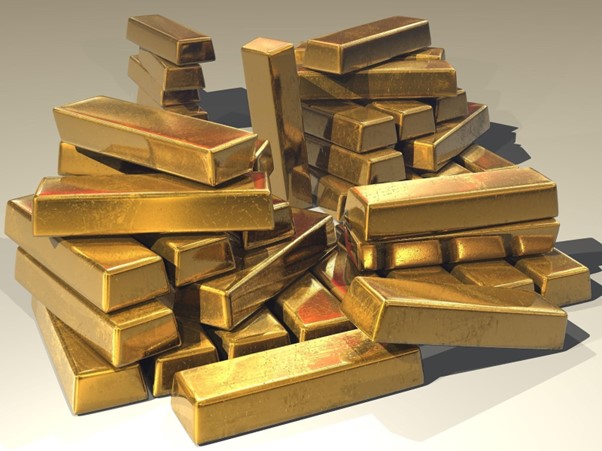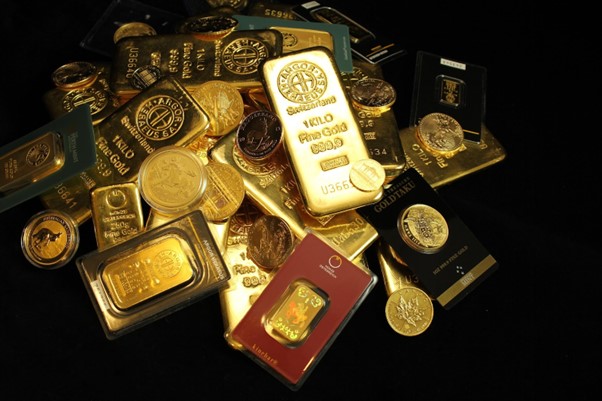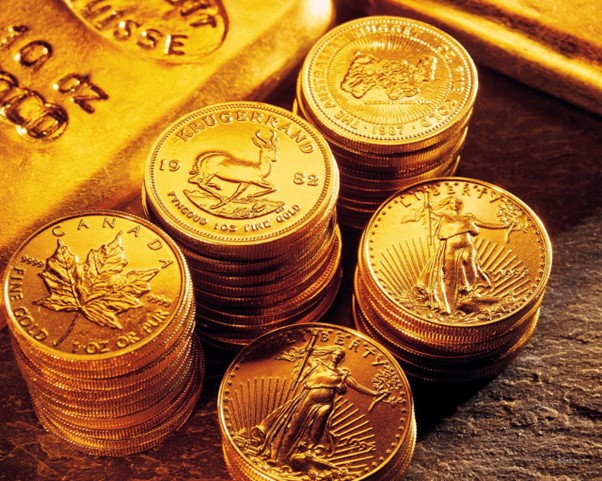The United States Bullion Depository keeps the most incredible stockpile of gold at Fort Knox, Kentucky. The United States Mint runs the repository, maintaining the bulk of the nation’s gold holdings there. According to the United States Mint, the repository now houses over 147.3 million ounces of gold worth more than $190 billion. The gold kept at Fort Knox is used to back the nation’s currency.
 Due to its perceived stability and worth, governments and central banks often use gold as a reserve asset. Central banks and other government-owned entities across the globe also own sizable gold reserves. For instance, the central banks of nations like Germany, China, and Russia all keep substantial quantities of gold in their vaults, as does the Bank of England in London.
Due to its perceived stability and worth, governments and central banks often use gold as a reserve asset. Central banks and other government-owned entities across the globe also own sizable gold reserves. For instance, the central banks of nations like Germany, China, and Russia all keep substantial quantities of gold in their vaults, as does the Bank of England in London.
Which nation has the most unmined gold?
The amount of gold yet to be extracted can vary significantly depending on several factors, including the availability and viability of mining operations, technological development, and the political and economic environment. As a result, it is difficult to say which country has the most unmined gold.
However, it is known that certain nations contain sizable gold resources that have yet to be entirely extracted. For instance, Australia is said to possess the most significant known gold deposits in the world, with some estimates putting its unmined gold reserves as high as 9,000 metric tons. The United States, Indonesia, and Russia are nations with significant unmined gold reserves.
Countries with the largest gold reserves in the world
According to statistics from the World Gold Council, the following nations have the greatest gold reserves in the world:
- United States – 8,133.5 metric tons
- Germany – 3,366.8 metric tons
- Italy – 2,451.8 metric tons
- France – 2,436.0 metric tons
- China – 1,948.3 metric tons
- Russia – 1,909.8 metric tons
- Switzerland – 1,040.0 metric tons
- Japan – 765.2 metric tons
- Netherlands – 612.5 metric tons
- India – 567.7 metric tons
It is essential to remember that a nation’s gold reserves may alter over time since governments and central banks may purchase or sell gold as a part of their monetary policy or diversify their foreign currency holdings.
How gold reserves work
A nation’s central bank or government may keep gold as part of its gold reserves which is a kind of foreign currency reserve. These reserves may be used as money or to underpin a nation’s currency.

Central banks and governments may hold gold reserves for several reasons, such as diversifying their foreign exchange reserves, insuring against economic or political instability, or preserving the value of their national currencies. Having gold reserves helps a nation’s economy remain stable during difficult times since gold is often seen as a haven asset.
Another weapon for monetary policy is gold reserves. A central bank could, for instance, purchase or sell gold to control inflation or the value of its currency.
A nation’s financial stability and economic strength are often seen as significantly influenced by its gold reserves.
How much gold does the U.S. have in reserve?
The World Gold Council reports that the United States has the highest gold reserves in the world as of December 2021, with a total of 8,133.5 metric tons of gold. This amounts to around 74.9% of the nation’s foreign currency holdings.
The nation has been amassing gold since the early 19th century, and the United States has a long history of retaining gold reserves. The United States has backed its currency with its gold reserves and used them as a weapon for monetary policy. Gold has been less important to the American economic system in recent years, and the nation currently holds its gold holdings primarily to diversify its foreign currency reserves.
Learn about the Federal Reserve Bank of New York gold vault
One of the 12 regional institutions that make up the Federal Reserve System, the country’s central banking system, is the Federal Reserve Bank of New York. There are various central banking system which are under the jurisdiction of the Federal Reserve Bank of New York, which is also in charge of implementing monetary policy and overseeing the banking system there.
Holding and managing the nation’s gold reserves is one of the duties of the Federal Reserve Bank of New York. The bank has a gold vault near the intersection of Wall Street and Broad Street in downtown Manhattan. It is one of the biggest gold vaults in the world and is said to contain more than $300 billion worth of gold.
The U.S. government owns the gold housed at the Federal Reserve Bank of New York’s vault, which is kept in the form of gold bars with a weight of around 400 troy ounces apiece. Additionally, the Federal Deposit Insurance Corporation insures the gold (FDIC). The gold is kept in a safe underground facility with several security precautions, such as armed guards, cameras, and reinforced concrete walls.
Which country has the most gold naturally
The quantity of gold in a specific nation may vary greatly depending on several variables, including the region’s geology, technical development, and the viability and expense of mining operations. As a result, it is impossible to say which country has the most natural gold.
However, some nations are known to have high gold production and ample gold resources.
According to statistics from the World Gold Council, China, Russia, the United States, Australia, Canada, Peru, Indonesia, Mexico, South Africa, and Ghana are the top 10 gold-producing nations in the world. These nations are in charge of producing the vast majority of the world’s gold thanks to massive gold resources that have been found and are now being mined.
The post Where is the world’s largest known stockpile of gold? first appeared on American Bullion.Original post here: Where is the world’s largest known stockpile of gold?

No comments:
Post a Comment